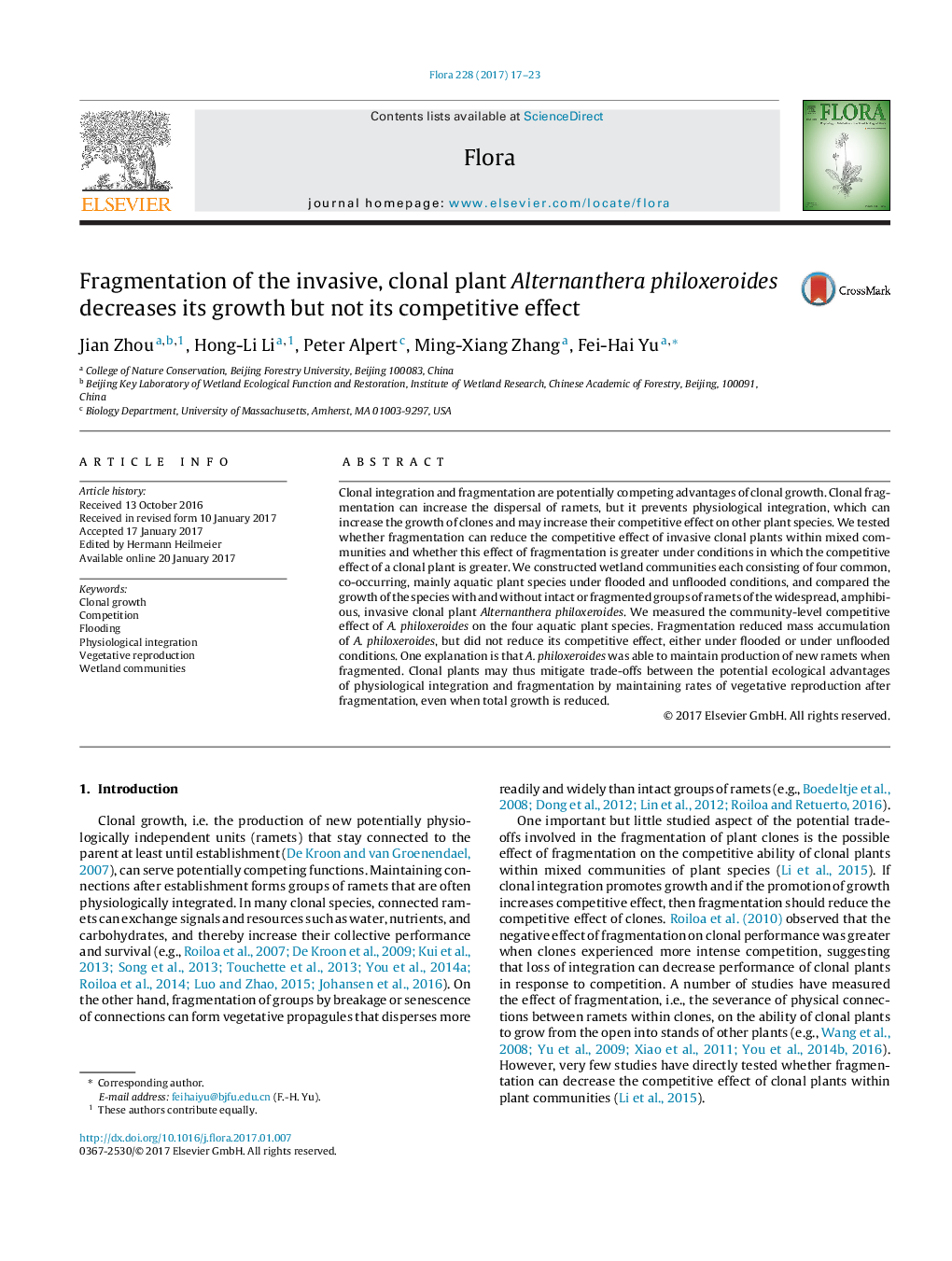| Article ID | Journal | Published Year | Pages | File Type |
|---|---|---|---|---|
| 5532340 | Flora - Morphology, Distribution, Functional Ecology of Plants | 2017 | 7 Pages |
â¢Clonal integration and fragmentation are competing advantages of clonal growth.â¢Clonal fragmentation may increase ramet dispersal but prevent integration.â¢Fragmentation of A. philoxeroides reduced its growth but not competitive effect.â¢A. philoxeroides maintained production of new ramets when fragmented.â¢Clonal plants can maintain vegetative reproduction even when growth is reduced.
Clonal integration and fragmentation are potentially competing advantages of clonal growth. Clonal fragmentation can increase the dispersal of ramets, but it prevents physiological integration, which can increase the growth of clones and may increase their competitive effect on other plant species. We tested whether fragmentation can reduce the competitive effect of invasive clonal plants within mixed communities and whether this effect of fragmentation is greater under conditions in which the competitive effect of a clonal plant is greater. We constructed wetland communities each consisting of four common, co-occurring, mainly aquatic plant species under flooded and unflooded conditions, and compared the growth of the species with and without intact or fragmented groups of ramets of the widespread, amphibious, invasive clonal plant Alternanthera philoxeroides. We measured the community-level competitive effect of A. philoxeroides on the four aquatic plant species. Fragmentation reduced mass accumulation of A. philoxeroides, but did not reduce its competitive effect, either under flooded or under unflooded conditions. One explanation is that A. philoxeroides was able to maintain production of new ramets when fragmented. Clonal plants may thus mitigate trade-offs between the potential ecological advantages of physiological integration and fragmentation by maintaining rates of vegetative reproduction after fragmentation, even when total growth is reduced.
